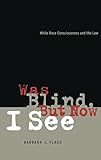Was Blind, But Now I See : White Race Concsiousness and the Law / Barbara J. Flagg.
Material type: TextSeries: Critical America ; 61Publisher: New York, NY : New York University Press, [2020]Copyright date: ©1997Description: 1 online resourceContent type:
TextSeries: Critical America ; 61Publisher: New York, NY : New York University Press, [2020]Copyright date: ©1997Description: 1 online resourceContent type: - 9780814726433
- 9780814728871
- 346.7301/3 21
- KF4757 .F59 1998eb
- online - DeGruyter
| Item type | Current library | Call number | URL | Status | Notes | Barcode | |
|---|---|---|---|---|---|---|---|
 eBook
eBook
|
Biblioteca "Angelicum" Pont. Univ. S.Tommaso d'Aquino Nuvola online | online - DeGruyter (Browse shelf(Opens below)) | Online access | Not for loan (Accesso limitato) | Accesso per gli utenti autorizzati / Access for authorized users | (dgr)9780814728871 |
Frontmatter -- Contents -- Acknowledgments -- 1. Introduction -- 2. An Overview of Race and Racism -- 3. The Constitutional Requirement of Discriminatory Intent -- 4. Constitutional Qualms -- 5. Disparate Impact under Title VII -- 6. Statutory Interpretation -- 7. Notes on Doctrinal Reform -- Notes -- Index -- About the Author
restricted access online access with authorization star
http://purl.org/coar/access_right/c_16ec
"Race" does not speak to most white people. Rather, whites tend to associate race with people of color and to equate whiteness with racelessness. As Barbara J. Flagg demonstrates in this important book, this "transparency" phenomenon--the invisibility of whiteness to white people-- profoundly affects the ways in whites make decisions: they rely on criteria perceived by the decisionmaker as race-neutral but which in fact reflect white, race-specific norms. Flagg here identifies this transparently white decisionmaking as a form of institutional racism that contributes significantly, though unobtrusively, to the maintenance of white supremacy. Bringing the discussion to bear on the arena of law, Flagg analyzes key areas of race discrimination law and makes the case for reforms that would bring legal doctrine into greater harmony with the recognition of institutional racism in general and the transparency phenomenon in particular. She concludes with an exploration of the meaning of whiteness in a pluralist culture, paving the way for a positive, nonracist conception of whiteness as a distinct racial identity. An informed and substantive call for doctrinal reform, Was Blind But Now I See is the most expansive treatment yet of the relationship between whiteness and law.
Mode of access: Internet via World Wide Web.
In English.
Description based on online resource; title from PDF title page (publisher's Web site, viewed 06. Mrz 2024)


